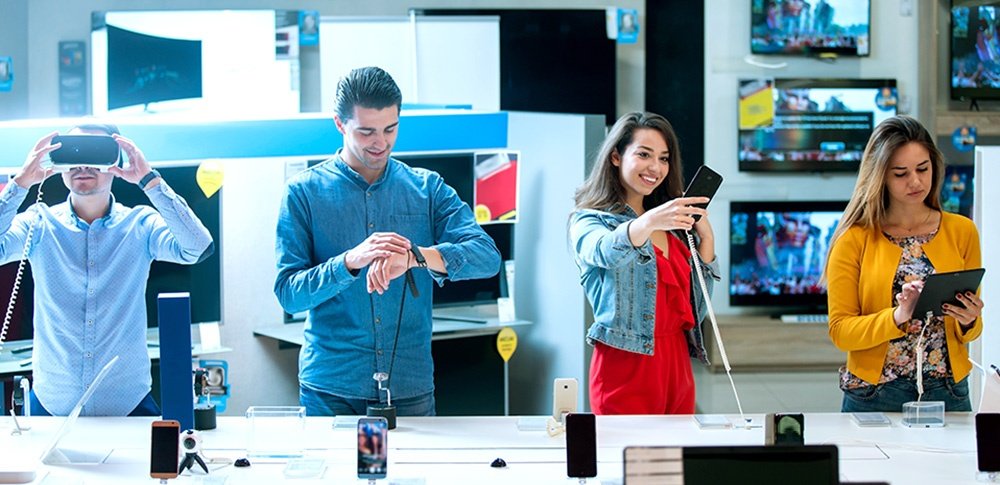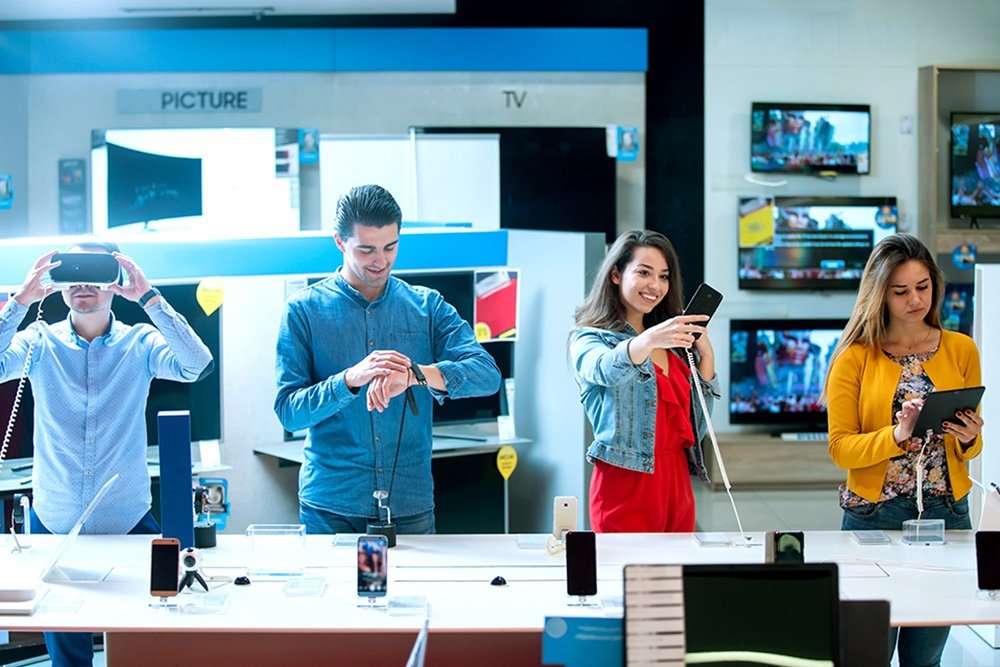
Most brick-and-mortar business owners are so focused on drawing customers to their store that they forget to reach out to them once they arrive. They fail to leverage in-store marketing that allows them to continue the conversation once customers walk through their doors.
Find out why you can’t overlook in-store marketing in restaurants, boutiques, shops, and service locations, and how this in-store marketing can positively influence your customers and business.
What Is In-Store Marketing?
In-Store marketing is the process of connecting with customers once they are in brick-and-mortar stores. See our previous blog post to learn more about In-Store Marketing.
Many companies focus the entirety of their marketing budget on getting people through the door. They think as long as customers are inside the store or business, the marketing portion of the sales process is done. However, this is not true. In-Store marketing is an important part of your sales process.
In-Store marketing increases the number of customers who convert (as opposed to leaving empty-handed) and increases the average ticket, growing your bottom line.
In-Store marketing also has the power to tap into your sales cycle and move customers toward their next purchase. It creates a positive experience that makes customers want to return and encourages loyalty to your brand. Instead of trusting customers who are already in your store to come again, this marketing form sets them up for multiple return visits.
Once you understand the importance of in-store marketing, you can take steps to incorporate it into your buying process, boosting your revenue and customer engagement rates.
In-Store Marketing Up-sells
Do you trust your customers to wander through your store or business and choose the best option from your company, or do you try to drive their decisions? Do you promote a seasonal special or promotional package to get them to try new things?
Up-selling customers is essential for companies that want to grow their sales.
If you can get your customers to spend just a few more dollars on average, you can see a significant growth in sales. The key is to tap into in-store marketing to drive these up-sells and get people to spend more.
For example, clearly-displayed digital signage can help your customers learn about your products and certain packages. They might not have known about their options, but your in-store marketing helps them make the best decision possible. You can even guide their eyes to choose specific options that cost more and present your menu board in a way that drives specific sales.
Instead of hoping customers can understand their options, you can sell them on various possibilities that benefit your bottom line.
In-Store Marketing Educates
Customer education is an important aspect of marketing and selling your products. If customers are unaware of their options or the benefits of different choices, then they’re unlikely to move beyond what they are comfortable with.
You might see this already in your “regulars” who only buy the same item when they come in, regardless of your offerings. While you appreciate their loyalty, sometimes you wished they tried something new.
In-Store marketing, when used throughout your store of business, drives customer behavior.
You can encourage people to try new things or promote seasonal specials that are only available for a short period of time. This drives demand and helps customers understand their choices beyond the basic options they select every time.
If your unsure whether you need informational marketing materials in-store, consider surveying your customers about their knowledge. You might find that they know less about your products than you think and could use some additional information to help them make the best choices.
In-Store Marketing Entertains
Along with up-selling customers on various products and helping them understand why they should buy from you, in-store marketing keeps people entertained and engaged while they wait.
Customers are growing increasingly impatient and expect service within a few minutes of arriving or ordering. From customers sitting in an auto shop or doctor’s office to people ordering at a fast casual restaurant, most professionals only have a short window before their audience gets antsy. In-Store Marketing provides outlets for distraction and entertainment, making the waiting process more palatable.
WiFi marketing and private label TV channels are clear examples of this. Customers can play on their phones while they wait or watch highly-curated TV content to keep them distracted. Both of these entertainment options bave marketing aspects, which help promote your brand messaging, but they’re presented in a fun and engaging way that customers appreciate.
In-Store Marketing Drives Loyalty
Business owners know that they can’t rely on new customers to drive their business. While new customers are important for growth, building a loyal base is essential to driving sales.
Remember, loyal customers spend an average of 67% more than new customers, so it pays to create a positive experience that brings people back.
Consider using digital signage and overhead messaging to promote your loyalty program. Your company could offer a discount to customers who join or give them a gift for signing up. This creates an incentive to sign up for your loyalty program and allows you to market to them based on their interests.
The marketing cycle doesn’t end when your customers make a purchase — it actually starts all over again. If you can connect with people in your store through loyalty promotions and other in-store marketing options, you can give them a reason to come back and move them deeper into the sales funnel. This creates less work for your other marketing channels, as you already have customers who are interested in returning.
Start In-Store Marketing Today
If you’re ready to tap into the power of in-store marketing and incorporate some of these tactics into your brand, then contact Spectrio today. We can set up a free consultation to review your individual needs and come up with a plan to keep customers engaged and excited about your business.
